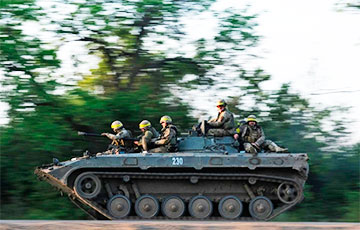Michael Bohnert: Kyiv Has Real Chance To Win War
9- 19.05.2024, 22:47
- 11,544

The American expert has listed what is needed to defeat the Russian Federation.
Despite that the Russian occupants are superior to the AFU in terms of manpower and weaponry, Kyiv still has a real chance to win the war.
Such a statement was made by Michael Bohnert, a military analyst at the RAND Corp centre. He noted that over the course of the war "no one has yet put forward a potential theory of victory", writes Business Insider. According to the expert, in order for Ukraine to win, its allies - the United States and the European Union - will have to spend between $54bn and $72bn a year to produce enough missiles and artillery shells for the AFU to launch an offensive.
This potential Ukrainian victory formula has two prerequisites. One is that the AFU is amassing a powerful ground combat force capable of defeating about 500,000 Russian soldiers.
That said, Bohnert points to a 2015 RAND study that suggests Ukraine could regain its territory. As part of that study, the experts analysed how large a force NATO would need to push back the Russian army in the event of invading the Baltic states and the Balkans.
"We estimate that another 14 brigades and accompanying assets would be needed, possibly six brigades and 86,000 soldiers in total coming from the United States, as well as eight brigades and the same number of troops from NATO allies, as well as forces for air and sea support," the 2015 study's conclusions said.
According to Bohnert, the Baltic scenario bears similarities to the situation Ukraine faces today.
However, it would be difficult to gather 21 brigades of about 4,000 soldiers each and train and equip them to NATO standards. "For comparison, 21 brigades is about 50-60 per cent of the US army. Or we will have to take the equivalent of the British, German or French army, train them and provide them with 100 per cent of all necessary hardware," Bohnert noted.
At the same time, the analyst believes that Ukraine could mobilise for a strike group capable of launching a decisive offensive. "If they were to conduct a force rotation for about two years, combined with a new conscription, they could probably re-equip enough brigades," Bohnert opined.
Right now, Ukraine's biggest problem is not a shortage of mobilised personnel, but a shortage of weapons and ammunition. "Most battalions are still not fully equipped. NATO has to give what was promised," Bohnert pointed out.
This raises another important question: how much ammunition does Ukraine need? Although tanks and drones have been useful in the war, the most devastating weapons have been artillery and long-range guided missiles. However, these weapons need huge quantities of howitzer shells or scarce missiles.
According to Bohnert, Russia is sending 25,000 to 30,000 new troops a month to the war in Ukraine. This means that Ukraine has to kill about 30,000 occupants per month, or about 1,000 per day, if it wants to undermine the power of the Russian Federation. The expert pointed out that this year the AFU is eliminating between 800 and 1,000 Russians per day, despite being "short of ammunition."
He noted that if there was enough ammunition, the AFU could inflict sufficient losses on the Russian Federation.
Bohnert also estimated the cost of ammunition for two scenarios: one in which Ukraine would remain in defence and one in which it would launch an offensive.
He began with the Estonian Defence Ministry's 2023 plan, which lays out a roadmap for Ukraine's victory over Russian Federation. "The war can be won in the next three years or less by adjusting and increasing NATO military production and aid to Ukraine, and by imposing the prospect of an unbearable level of attrition on the Russian Federation," according to Estonia.
The Estonians calculate that the AFU will need a steady stream of ammunition, which includes 2.4 million artillery shells, 4,800 air defence missiles capable of protecting cities from Russian missiles, and 8,760 guided bomber missiles a year. But the list does not cover air defence assets that Ukraine might need for frontline troops, Bohnert noted.
Overall, Bohnert estimates that $20-$35 billion a year will be needed if Ukraine remains in defence, and $54-$72 billion a year if the AFU launches an offensive. But even these figures are incomplete. "This doesn't include training, support and equipment. This is a lot of money, but in fact, the US has been spending about the same amount on Iraq and Afghanistan for 15 years in a row," the expert stated.
Bohnert believes that NATO can meet Ukraine's needs. The USA, for example, plans to produce 14,000 GMLRS missiles in 2025 and can produce up to 700 cruise missiles per year. America and NATO together produce about 4,600 anti-aircraft missiles per year. And what Ukraine's allies cannot produce themselves, they will be able to buy from other countries. "It's quite feasible. It will just require money," Bohnert emphasised.
He noted that Ukraine's extensive ammunition stocks partially compensate for the military shortage. "Essentially, you are replacing people with metal. However, it will take quite a significant increase in Western donations," he said.










